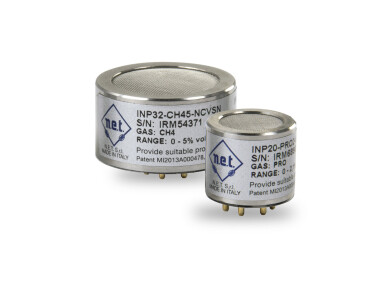Measurement and Testing
What is Guided Wave Radar?
Oct 03 2014
Guided wave radar is among the leading technologies for measuring the level of bulk liquids, solids and slurries. Lower-dielectric materials, such as molten sulphur, or other fluidised solids, are often stored in tanks for commercial use. In general, such products are extremely harmful to humans, and tricky to measure with any degree of accuracy. When an individual needs to take an accurate measure of harsh materials stored in such tanks, she or he may use guided wave radar. Since guided wave radar doesn’t rely on any moving parts, it can be used in conjunction with harsh chemicals, and it remains effective under a variety of temperatures. Furthermore, it allows the individual taking the measurement to remain at a safe distance from the substance being measured.
How does guided wave radar work?
Radar works by measuring transmitted signals; the process involves sending microwave pulses through a liquid, solid or slurry. Naturally, the pulses reach the bottom of the vessel in which the liquid, solid or slurry is being stored eventually. As a pulse travels through a product, it undergoes a change (the nature of the change a pulse undergoes depends upon the product’s dielectric). A fraction of the pulse is then reflected back to a receiver, which is able to measure the exact amount of time which has elapsed between the signal’s departure and its return.
Radar technology is also known as time domain reflectometry. When it comes to guided wave radar, the radar beam is controlled by a “waveguide” or probe, which has been specially designed, and has to be inserted into the product. This device prevents the dispersion of the radar signal, offering a greater degree of accuracy.
Microwave sensors are especially useful in unusually vaporous, dusty or moist environments, since they are capable of penetrating temperature and haze layers that may cause issues for other technologies, such as ultrasonic devices. As microwave sensors do not require physical contact in order to measure the product, they can be mounted at a safe distance. In addition to this, guided wave radar can be used to measure products in narrow, low or other difficult to reach spaces.
The major disadvantage of guided wave radar technology is its relative costliness. It can also prove rather complex to set up. However, the price of guided wave radar technology has dropped a great deal over recent years, and such technologies are also becoming more user friendly as more and more companies seek user-friendly precision measuring devices.
What can guided wave radar be used to measure?
Guided wave radar can be used to measure a number of products accurately, including challenging products, such as low dielectric materials. The technology is a popular tool when it comes to measuring harsh products, like liquid ammonia, propane, butane, crude oil, chlorine, fly ash, slurries, acids and chemical powders.
Further Reading
Recently, Petro Online looked at the way guided sensors stack up against other time-of-flight technologies such as through-the-air radar and ultrasonic sans then at some application guidelines. You can read more in this article: Level Sensing in Harsh Environments with Guided Wave Radar.
Digital Edition
PIN 25.5 Oct/Nov 2024
November 2024
Analytical Instrumentation - Picturing Viscosity – How Can a Viscometer or a Rheometer Benefit You? - Sustainable Grease Formulations: Evaluating Key Performance Parameters and Testing Method...
View all digital editions
Events
Dec 03 2024 Dusseldorf, Germany
Dec 08 2024 Anaheim, CA, USA
Turkey & Black Sea Oil and Gas
Dec 11 2024 Istanbul, Turkey
Dec 19 2024 Aurangabad, India
Jan 20 2025 San Diego, CA, USA



















